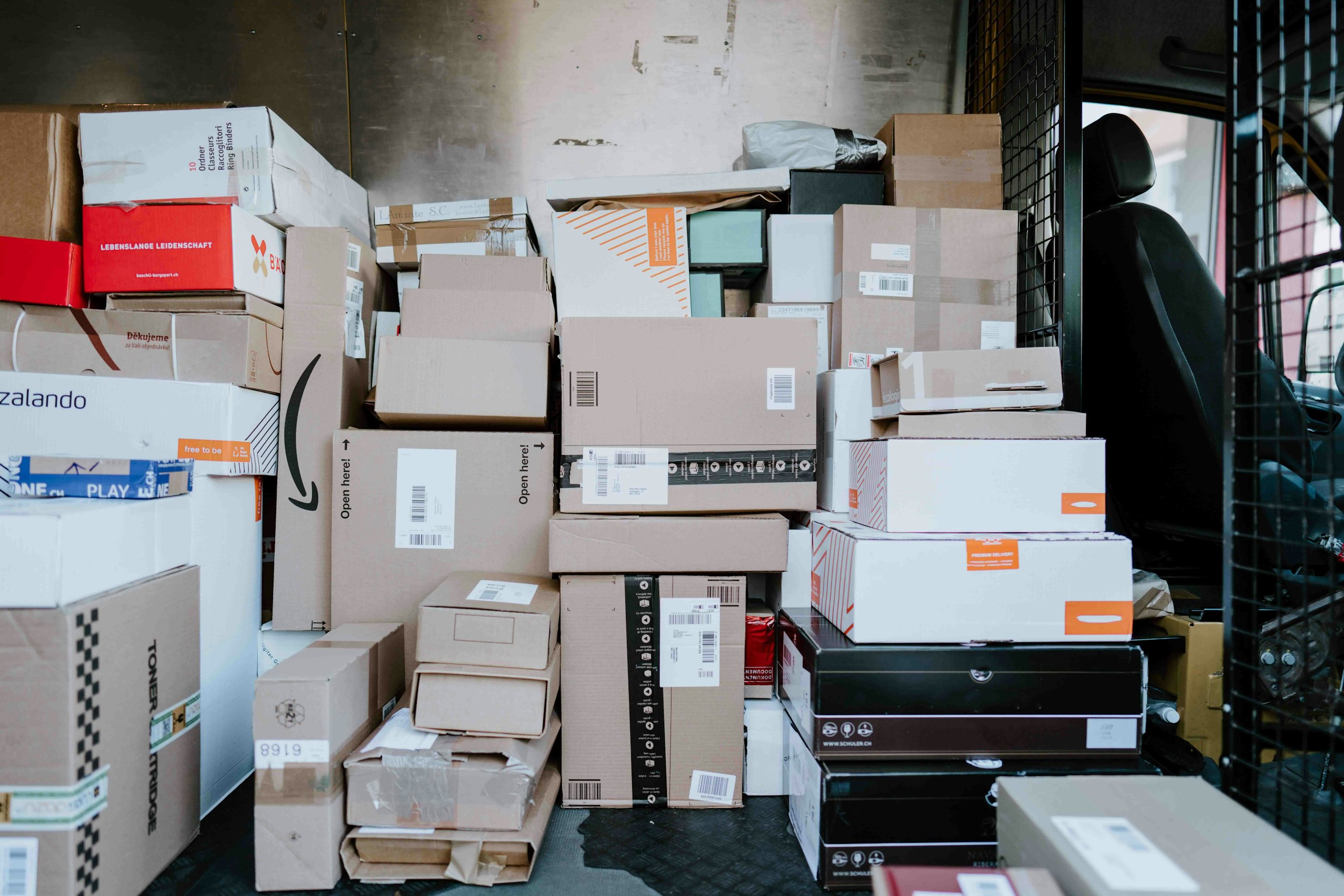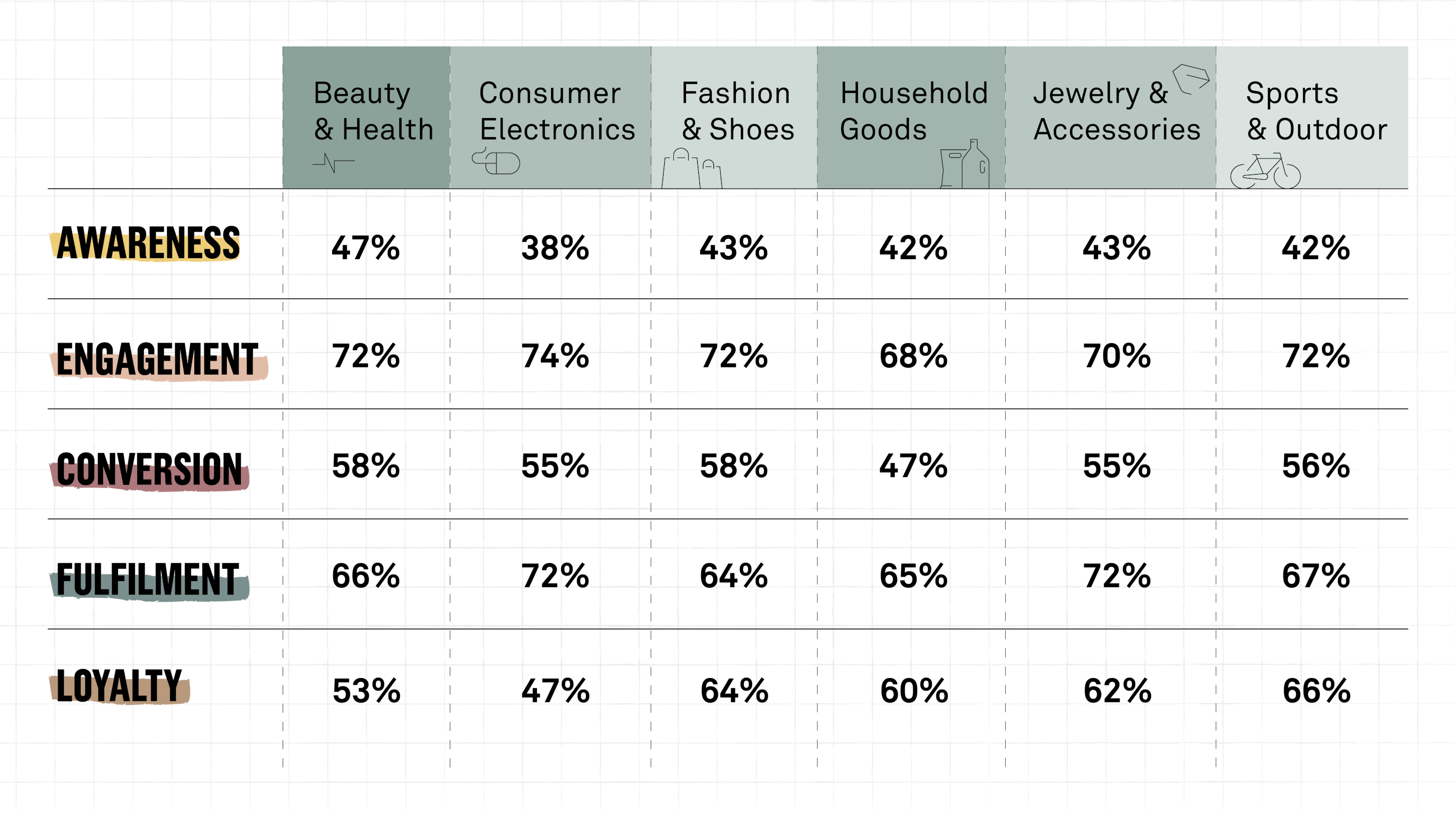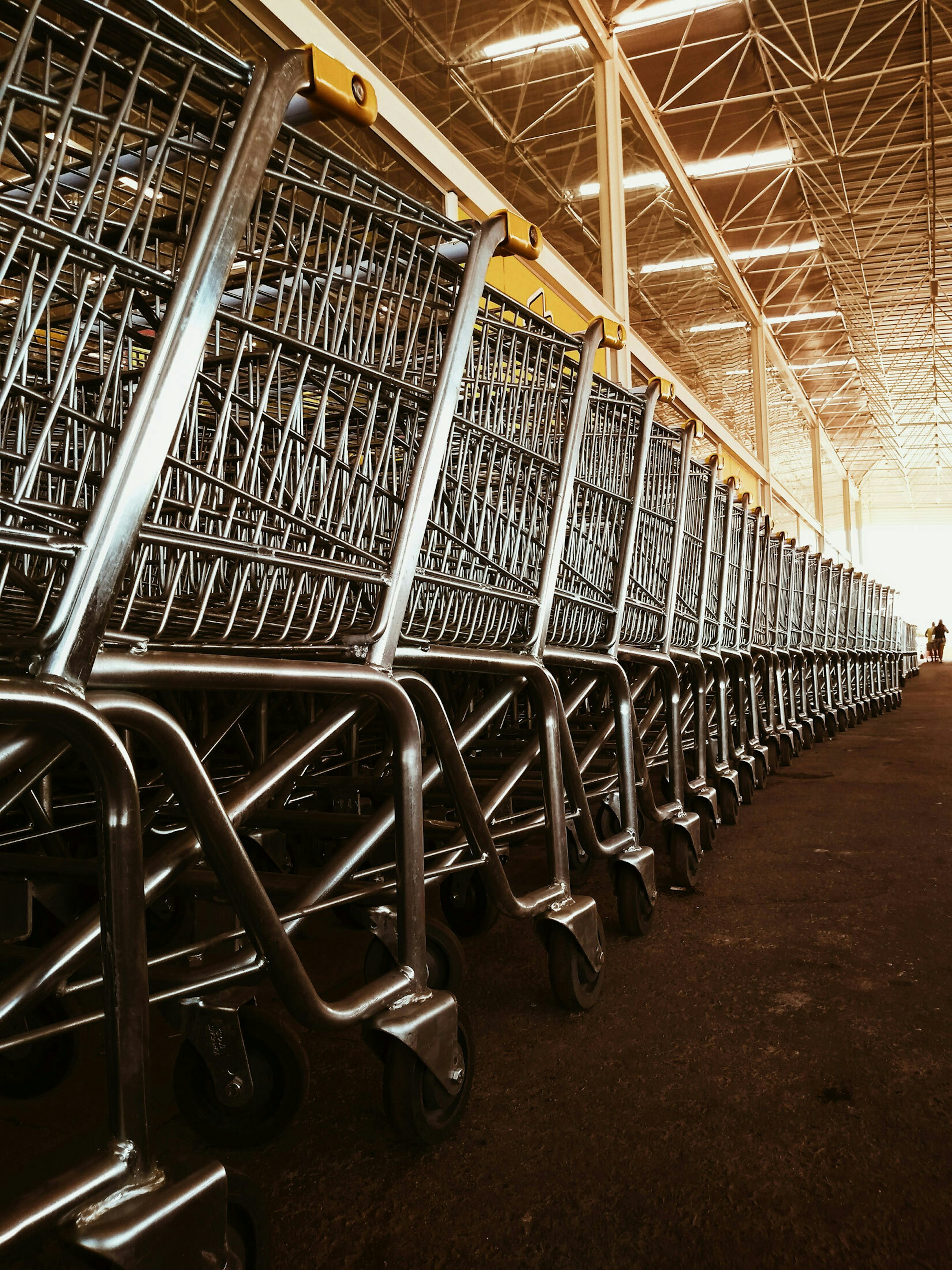– what is the path forward in retail?
17 June 2022
E-commerce and omnichannel – what is the state in retail? During Q1/Q2 of 2022, a number of Implement consultants in Germany set out to examine if the commitments to customer experience and sustainability made by retail companies also continued into actual operations and subsequent visible results.
In the retail world, interaction and integration of online as well as offline will become future standard. The question is no longer whether one will come or the other will remain but how they complement each other in a meaningful way.
Research figures show that omnichannel customers are the most valuable group of buyers, on average performing 70% more transactions in 90 days and so buying significantly more frequently than pure “online” or traditional “offline” shoppers.
Retail companies are increasingly focusing on direct-to-consumer business to sell their products – and it is no surprise. It has become a priority to build own e-commerce channels and capabilities beyond traditional brick-and-mortar formats – may it be through fulfilment platforms/marketplaces or owned, pure-play, stand-alone solutions with direct control and management.
Irrespective of retailers’ decisions, supply chain remains a focal topic – and building resilience in internal and external logistics is a competitive advantage and decisive winning factor.
Remembering all of the customer touchpoints in retail
Retail customers run through multiple touchpoints – from awareness to engagement, conversation, fulfilment and loyalty – each representing a make-or-break point in the buying process and customer journey. And once the customer has clicked “buy now”, it is all up to logistics setups to not only deliver the product to the customer’s door but to meet and exceed promises by delivering a superior customer experience.
If the customer meets a problem in the delivery process, it has an increasingly negative impact on the customer experience. Believing that logistics is purely attributed to the service providers is a mistake – customers are right when they see this as part of the retailer’s operations and ownership. It is on retailers themselves to secure turning one-and-done customers into loyalists. And it is also clear that a good customer experience does not stop with the product being delivered to the customer’s door – it also includes a well-designed and functioning return process and aftercare.
Examining e-commerce and omnichannel in retail
Our methodology
For many retail companies, customer experience and sustainability – among others – are the ultimate goals and commitments.
At Implement, we wanted to see if the commitments continued into actual operations and subsequent visible results. During Q1/Q2 of 2022, we therefore placed real orders with more than 70 retailers in Germany across multiple sectors, incl. fashion and apparel, sports, jewellery and accessories, consumer electronics, consumer goods, healthcare and beauty, household goods and decoration. All orders have been placed during workdays and mornings outside of peaks. Delivery took place to our home addresses in Munich, Germany, being able to compare promises made during the buying process vs actual realised experiences.
We then used a framework consisting of more than 40 questions as the foundation to collect and analyse data as well as to pull out the key findings to share with you here.
Our key findings
So what is the state of e-commerce and omnichannel in retail?
Already today, 30% of retailers position themselves as omnichannel players, aiming to offer synchronised touchpoints along the customer journey. However, only a fraction out of 70 retailers applied ship-from-store methodology, thus using nearby retail stores as micro-fulfilment centre.
Customers can interact with retailers across different channels – in physical stores, in webshops, through mobile apps, on social media etc. They can also access these channels from different devices – enabling them to buy products anytime, anywhere. A seamless customer journey allows the customers to move smoothly and efficiently from one channel to another based on their preferences.
It is crucial that retailers have designed their operating/business model, governance structure and (digital) backbone in such way to really create value for customers along multiple dimensions.
Creating customer value does not start with how retailers are organised or how stores are designed – but how customers prefer to do their shopping and the value offered in this experience relative to the cost, ranging from purchase decision to order fulfilment and last-mile delivery to returns etc.
The overall results of the maturity assessment
Great insights! What is in it for me?
The answer is simple: we will provide you with your company’s specific results – benchmarked against your relevant peers. All we ask is that you fill in your contact details in the form below and have a few days’ patience for us to come back to you. That is it.
Are you curious about a specific topic? Please reach out to us via email.
What does the “behind-the-scenes picture” look like when it comes to order fulfilment?
- The average promised order lead time is 2-4 days – however, only 50% of retailers meet the promise, thus leaving great room for improvement.
Why is this of relevance? Order lead time defines the timespan from order entry to final receipt at the assigned address. It is largely influenced by the time the order is placed, by order-waving procedures/cut-off and by pick-up times from carriers. High order volumes combined with early pick-up times put distinct pressure on pick, pack and ship processes and defined service levels. State-of-the-art warehouse operations in line with innovative and technology-enabled solutions may help maximise performance and secure short turnaround times.
- 25% of retailers allow customers to choose preferred carriers and delivery options – eco-friendly and sustainability solutions are only promoted in very rare/limited cases.
Why is this of relevance? Last-mile delivery is the mastery in order fulfilment. Carrier capabilities may significantly differ per region – and from a customer perspective, being able to choose a “proven” carrier in many cases represents a key factor in the buying decision. On top, delivery to parcel stations or lockers or the ability to short-term delivery changes helps make the first delivery attempt successful, cost-efficient and convenient. Multi-carrier management also allows retailers to balance capacities, drive flexibility and performance and mitigate risks.
- 30% of retailers rely on packaging often being x-times bigger than the actual product ordered – neglecting mature and proven solutions in line with strong return on investments.
Why is this of relevance? Growing order volumes and tight transport capacities result in a conflict by nature. And yes, proper packaging is important to avoid damages. Finding the right balance to it is strongly driven by product sizes and characteristics – aiming for the next step, more parcels can be shipped with the same trailer, waste is subsequently reduced, and cost is saved, not to mention the customers’ perception when ordering e.g. charms, cables etc. and receiving shoe-sized parcels filled with a magnitude of plastic, wrapping paper and air.
- The closer the order is to actual delivery, the poorer the direct communication from retailers is – 75% of retailers leave the delivery experience purely in the carriers’ hands, if at all.
Why is this of relevance? Order confirmations are being received within minutes. A few days later, the inbox shows the retailer’s shipping confirmation combined with the tracking ID. From here, customers are left in a black box, and customer service might be faced with a bunch of “WISMO” requests. How courteous would it be to receive a pre-delivery notification on the expected delivery date/time as well as a delivery confirmation – just in case customers have not been home and would like to accelerate the treasure hunt finding the parcel.
- Returns are a struggle to retailers and customers: great to see that 15% of retailers aim for paperless returns – however, the ways of working indicate room for improvement.
Why is this of relevance? Return rates in e-commerce may be up to 75%. Many retailers have transitioned from automatically providing return paperwork in the parcel to a formal return authorisation process. Doing so not only allows for better planning, but it also reduces “process waste” during packing and ensures acting more sustainably. However, multiple examples show that forms and labels created and filled in online still need to be printed, even though digitised solutions, such as QR codes, would make all these efforts obsolete.







